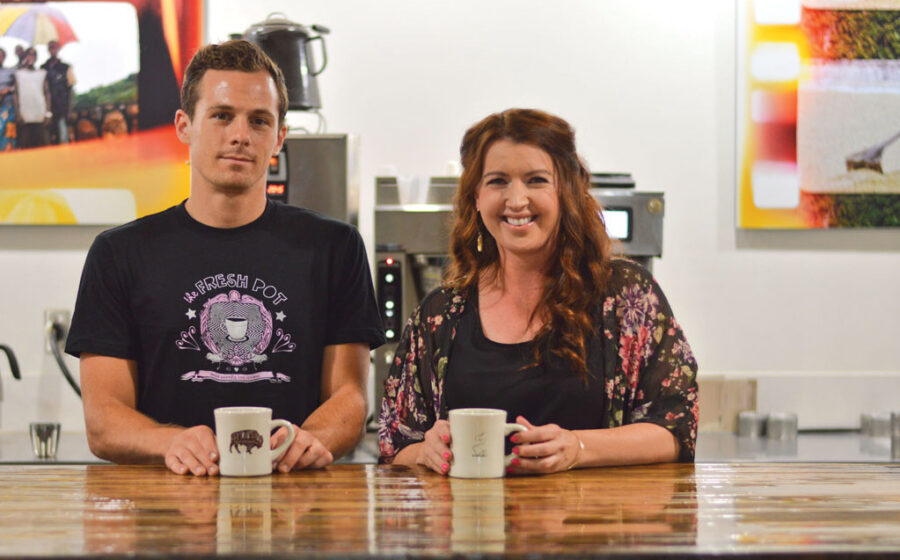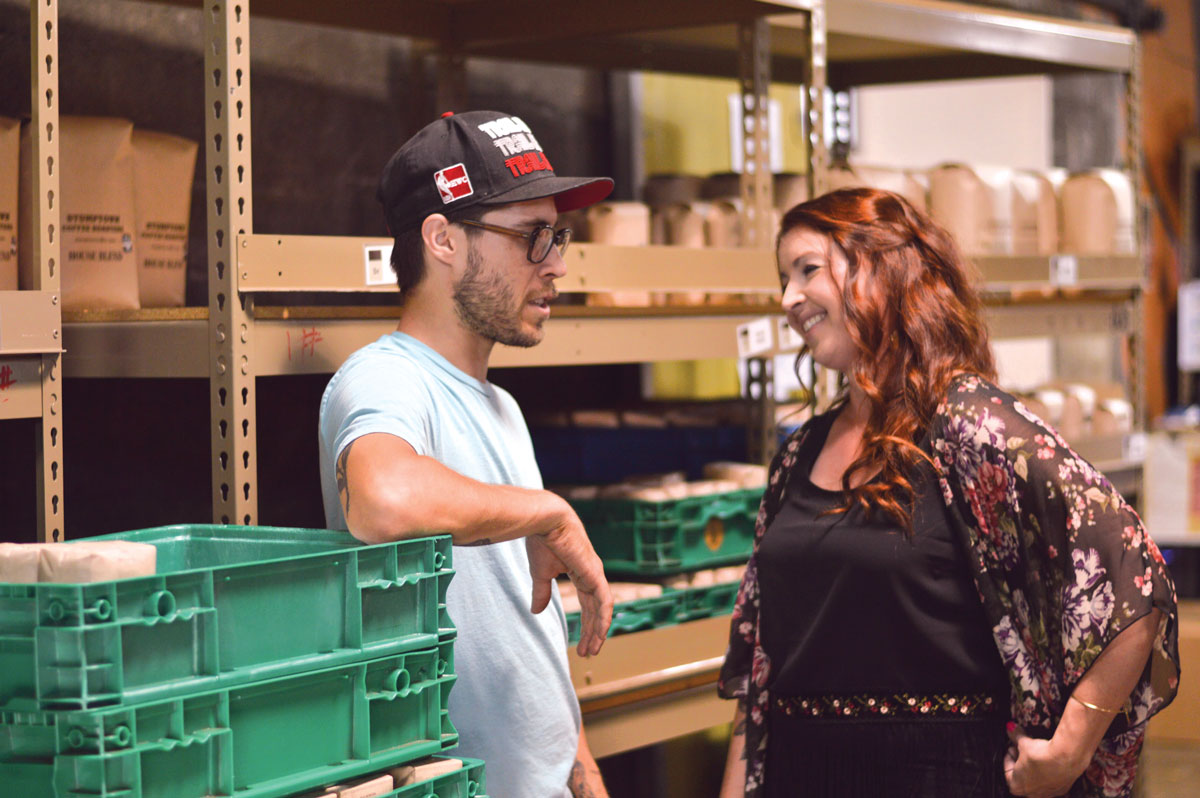[W]hen I first began looking for a roaster my heart was set on Stumptown. I meekly called their wholesale line in 2005, keenly aware that I had no idea what I was doing. I had no coffee acumen, no business degree, and clearly no reason for the industry darling to call me back.
And they didn’t.
I met my first roaster on the Internet. We shared a similar ethos. I chose a dark, oily roast and it served me well for three years. As they grew, adding Target and Nordstrom to their accounts, I was proud to see them hit their stride but also afraid I would have to compete for attention. I wanted more than just one visit per quarter. I wanted to go deeper. I knew I needed education to achieve retention on both sides of my bar. We had yet to find consistency across the menu; drinks would vary in taste and presentation from barista to barista.
I wanted more than just one visit per quarter. I wanted to go deeper. I knew I needed education to achieve retention on both sides of my bar.
My desire to serve drinks that looked and tasted the same at all times meant either I hovered over the bar watching their every move or I needed to find a partner to help me teach. I chose help. I was emotional when I called my first roaster and shared my plan to move on. I was (am) a better owner because of them. They were the first to say “yes” to me and they taught me to always lead with my brand.
My second roaster had their education act together. They ran a training lab and popping in to slurp and sip was highly encouraged—a privilege I abused. They wooed us with latte art and trade shows, further exposing us to the cult that is coffee. To this day I am working with vendors and serving products they introduced me to. Four years into my committed relationship with my second roaster, an e-mail arrived with the subject line, “Moved: Great Story.”
“Leah your website inspired me to write you. I also have owned a cafe in an underserved neighborhood and I appreciate the value and reward that goes along with creating a community space and serving good coffee. Should you wish to learn more about the Stumptown wholesale program or simply sit and talk, please call. I’ll be sure to make my way out to Silk. Thanks for the inspiration, Evan.”
I spent the next four months wavering in disbelief. Is it possible that the roaster I had long admired was interested in me?
I spent the next four months wavering in disbelief. Is it possible that the roaster I had long admired was interested in me? “My current roaster is very good,” I repeated in the mirror. “I am very loyal,” I chanted. If a con list for my second roaster existed there were only two entries: recently this side of town seemed to be saturated with their product and a few internal changes at their headquarters meant saying goodbye to some special faces. Neither of these were deal breakers. So, why did I re-read Evan’s e-mail too many times to count? Why, while my head was busy counting the risks of change, was my heart brimming?
As promised, Evan visited several times and always left something behind. One afternoon he showed up and offered lunch; he knew first hand that owners rarely eat. He took me to visit cafés that didn’t serve Stumptown and some that did; modeling a deep respect for the coffee community and a quiet confidence in his product. He even rescued scones when our baker couldn’t make a delivery.
Swoon.
I dialed my second roaster with the news. “It’s not you; it’s me,” I told them. I was (am) a better vendor because of my second roaster. They taught me to survive in lean times; to put my roof, staff, and roaster first, because everything else can wait.
Counting the ways I cherish Stumptown is not to call my first two roasters flawed. Stumptown simply showed me things I had no idea I needed. Evan’s visits, the cuppings, the crawls, the classes inspired what is now my in-house training program. I have motivated, content baristas and retention on both sides of my bar. With their help we introduced cold brew on tap. Sales are now up in what used to be sluggish summer months. Committing to Stumptown’s training has elevated our brew methodology. We now know how to help our guests navigate the vast world of coffee. Small wares rarely gather dust on our shelves and retail coffee disappears as fast as it arrives. I had no idea any of this was possible.
Like any good relationship, it is not just about finding the right partner but about being the right one too. If you ask the crew at Stumptown what made Silk a good fit for their wholesale program, they will tell you how they asked me to change a few things at the start and how my willingness to see value in these changes (like investing in new equipment and pairing down our menu) opened the door for me. They will joke about how often I pop into their workspace, chatting up the sales team, tinkering in the training lab, cornering the green buyers, and sticking my nose into the roastery.
I am a better person because my third roaster happened upon me when I least expected them. Silk has been increasingly profitable from the first month I said “yes” to them. It was the right fit for us, and a café owner should never be afraid to change roasters and find a better fit.
—Leah McMahon is the owner of Silk in Gresham, Oregon.
















